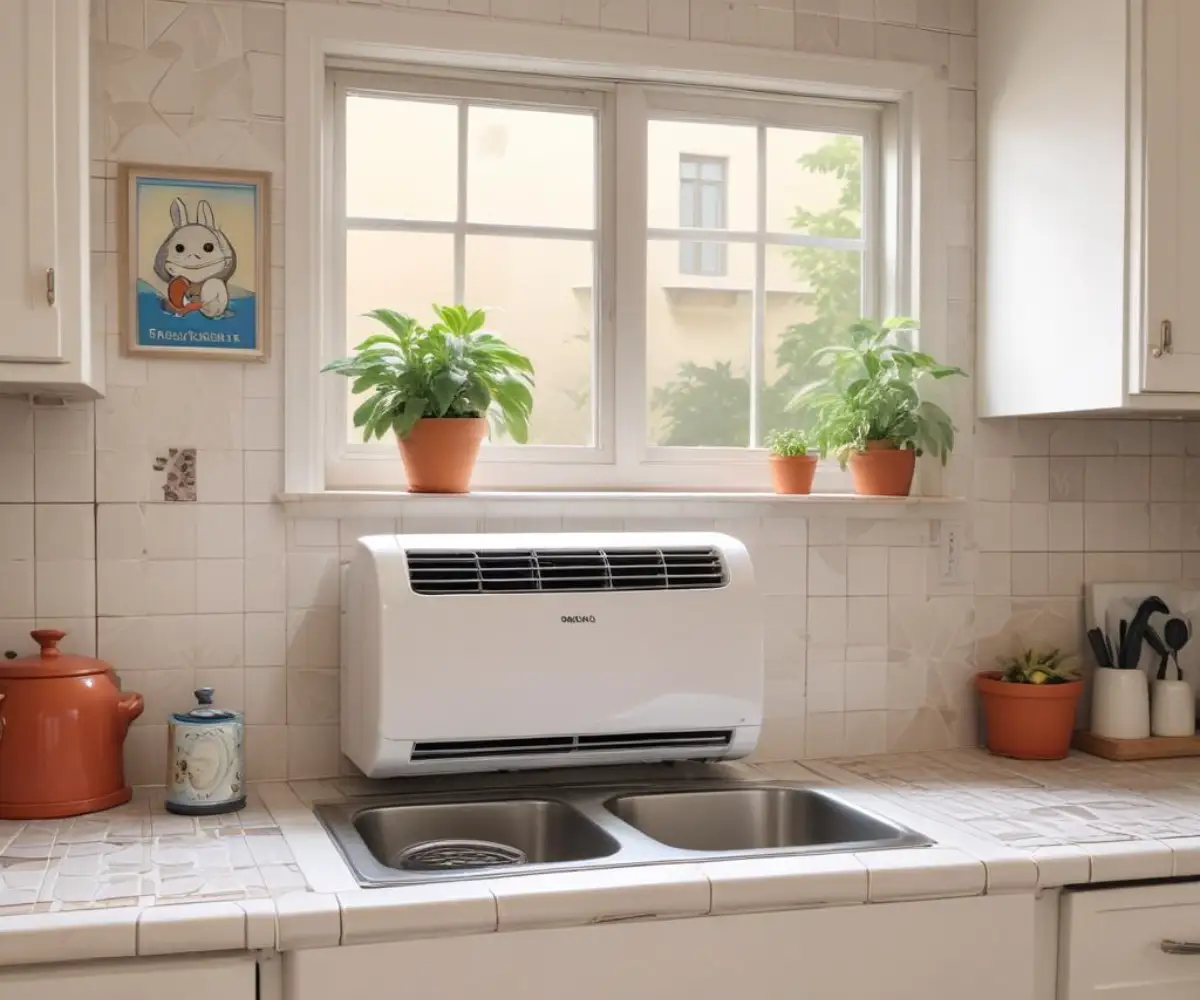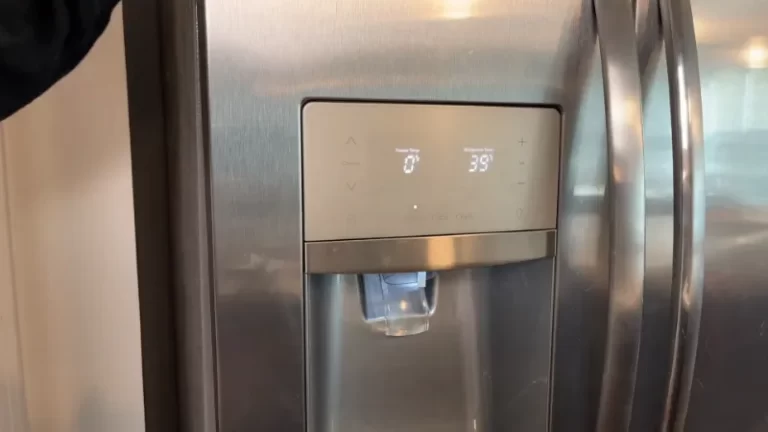Why is a Mini-Split the Ultimate Cooling Secret for a Hot Kitchen?
Does your kitchen turn into a sweltering sauna the moment you turn on the oven? You’re not alone. For countless homeowners, the kitchen is the hottest, most uncomfortable room in the house, a place where the joy of cooking is quickly baked away by oppressive heat.
The problem is that traditional central air conditioning systems often just can’t keep up. They are designed to cool a whole house, not to target the intense, localized heat generated by stoves, ovens, and dishwashers. This leaves you with a frustrating choice: freeze out the rest of the house or sweat it out while you cook. But what if there was a better way? A way to have precise, powerful, and efficient cooling right where you need it most?
That solution is a ductless mini split. This guide will reveal why a mini split isn’t just a luxury for your kitchen but an essential upgrade for comfort, air quality, and energy savings. We’ll explore exactly how this technology solves the unique climate challenges of the busiest room in your home.
You'll Learn About
Why Your Kitchen Is an Unbeatable Heat Magnet
Before we dive into the solution, it’s crucial to understand the problem. Kitchens are fundamentally different from other rooms. They are active workspaces filled with powerful appliances that generate a tremendous amount of heat in a concentrated area.
The Culprits: Heat-Generating Appliances
Your oven, stovetop, dishwasher, and even your refrigerator are constantly pumping out heat. During cooking, this heat production goes into overdrive, quickly overwhelming a central HVAC system that is trying to maintain a consistent temperature throughout the entire home. This results in “hot spots” that make the kitchen unbearable, even while the living room remains chilly.
The Downfall of Central Air Conditioning
Central air systems are great for general cooling but lack the ability for targeted zone control. Your thermostat, likely located in a hallway or living room, has no idea that your kitchen is 20 degrees hotter. To compensate, you’d have to lower the thermostat for the entire house, wasting energy and creating uncomfortable temperature imbalances. Mini splits solve this by providing dedicated, room-by-room temperature control, allowing you to cool just the kitchen when needed.
The Mini Split Solution: Your Kitchen’s New Best Friend
A ductless mini split system is a game-changer for kitchen comfort. Comprised of a quiet outdoor compressor and a sleek indoor air-handling unit, these systems deliver cooled (or heated) air directly into the room without needing extensive ductwork. This direct delivery is the key to their efficiency and effectiveness.

Targeted, On-Demand Comfort
The primary advantage of a mini split in the kitchen is zonal control. With a simple remote, you can instantly cool down a hot kitchen without affecting the temperature in any other part of your home. This means you can cook a Thanksgiving feast in a perfectly comfortable environment while the rest of the house stays at a normal temperature.
Whisper-Quiet and Unobtrusive
Unlike loud window AC units or roaring range hoods, mini splits are famously quiet. The noisy compressor unit is located outside, so the indoor unit produces little more than a gentle hum. Their modern, streamlined design also allows them to blend seamlessly into your kitchen decor, often mounted high on a wall where they go unnoticed.
Astonishing Energy Efficiency
Because mini splits don’t lose cooled air through leaky ducts and allow you to cool only the room you’re using, they are incredibly energy-efficient. This translates to significant savings on your monthly utility bills. By not forcing your central air to work overtime, a mini split can pay for itself in energy savings over time.
Choosing the Right Mini Split for Your Culinary Haven
Selecting the correct mini split is crucial for optimal performance. The two most important factors to consider are the size (cooling capacity) and the placement of the indoor unit. Getting these right will ensure your kitchen remains a comfortable oasis.
Sizing Your Unit: The BTU Breakdown
A mini split’s cooling power is measured in British Thermal Units (BTUs). An undersized unit will struggle to cool the room, while an oversized unit will cycle on and off too frequently, wasting energy and failing to dehumidify the air properly. For a kitchen, you generally need to size up due to the extra heat from appliances. A good rule of thumb is to calculate your room’s square footage and then add extra BTUs to compensate for heat-generating sources.
Here’s a basic guide, but always consult with an HVAC professional for a precise calculation based on your specific kitchen’s layout, window exposure, and appliance load.
| Kitchen Size (Square Feet) | Estimated Base BTUs Needed | Recommended Capacity |
|---|---|---|
| 150 – 250 sq. ft. | 6,000 BTUs | 9,000 BTUs |
| 250 – 400 sq. ft. | 9,000 BTUs | 12,000 BTUs |
| 400 – 550 sq. ft. | 12,000 BTUs | 15,000 – 18,000 BTUs |
| 550 – 700 sq. ft. | 15,000 BTUs | 18,000 – 24,000 BTUs |
Smart Features to Consider
Modern mini splits come with a host of features designed for convenience and better air quality. Look for models with Wi-Fi connectivity for smart home integration, advanced filtration systems to capture grease and odors, and a “dehumidify” mode, which is excellent for steamy kitchens.
Strategic Installation: The Key to Peak Performance
Where you place the indoor unit is just as important as the unit you choose. Proper placement ensures optimal airflow and prevents potential maintenance headaches down the road. It’s a critical step that requires careful thought and planning.
The Number One Rule: Avoid the Stove
Never install the mini split indoor unit directly above or too close to your stove or oven. The heat, steam, and grease rising from your cooking can get sucked into the unit, clogging the filters, gunking up the internal components, and potentially damaging the system. A buildup of grease can be difficult to clean and will significantly reduce the unit’s efficiency and lifespan.
Finding the Sweet Spot for Airflow
The ideal location is high on a wall, away from heat sources, where it can distribute air evenly across the room without creating drafts on the people in it. If your kitchen has an open-concept layout, placing the unit on a shared wall with an adjoining dining or living area can help circulate conditioned air more broadly. This approach leverages the open space while protecting the unit from the immediate cooking zone.
Wall Integrity and Mounting
The indoor unit must be mounted securely. Before drilling, it is absolutely essential to understand your wall’s structure. You need to know vital information, such as how much weight furring strips can hold, and locate a sturdy wall stud to ensure a safe installation. This is a perfect example of a detail where professional installation provides peace of mind.
DIY Installation vs. Hiring a Professional
While some homeowners with advanced skills may be tempted to install a mini split themselves, this is one project where hiring a professional is almost always the better choice. HVAC systems are complex, involving high-voltage electrical work and the handling of refrigerant lines.
The Case for Professional Installation
A certified HVAC technician will ensure the unit is sized and placed correctly, the refrigerant lines are properly flared and sealed to prevent leaks, and the electrical connections are safe. Proper installation is critical for the system’s efficiency, longevity, and warranty. An improperly installed unit can lead to poor performance, refrigerant leaks, and costly repairs that are not covered by the manufacturer’s warranty.
The Cost of Comfort
The cost to install a single-zone mini split can range from approximately $2,500 to $5,000, depending on the unit’s capacity, brand, and the complexity of the installation. While this is a significant investment, the long-term energy savings and vast improvement in comfort make it a worthwhile upgrade for the heart of your home.
Keeping Your Mini Split in Prime Condition
One of the best things about mini splits is their low maintenance requirements. However, a little regular care will keep your unit running at peak efficiency for years to come. In a kitchen environment, this is especially important due to airborne grease and food particles.
The Simple Power of Clean Filters
The most important maintenance task is to clean the filters regularly. Most indoor units have easily removable, washable filters. In a kitchen, you should check them monthly. Simply slide them out, wash them with warm, soapy water to remove dust and greasy buildup, let them air dry completely, and slide them back in. This simple step takes minutes and dramatically impacts air quality and efficiency.
Don’t Forget the Outdoor Unit
The outdoor compressor unit also needs attention. Ensure it remains free of debris like leaves, grass clippings, and dirt. A gentle spray with a garden hose once or twice a year is usually all it takes to keep the coils clean and the air flowing freely.
Conclusion: Reclaim Your Kitchen
A hot, stuffy kitchen doesn’t have to be your reality. A mini split is more than just an air conditioner; it’s a targeted, efficient, and quiet solution that puts you in complete control of your environment. It addresses the unique challenges of kitchen heat head-on, transforming the busiest room in your house into a consistently comfortable space.
In a home where creative solutions are valued, from using upside-down shelf brackets for extra storage to making thoughtful modifications, a mini split is the ultimate functional upgrade. Ensuring your home is comfortable for everyone is a top priority, and that includes the kitchen. After all, a comfortable home is a happy home, and that principle is just as true when planning major accessibility updates, like figuring out how to make a split-level home handicap accessible, as it is for everyday comfort. By investing in a mini split, you’re not just cooling a room—you’re enhancing your quality of life.


